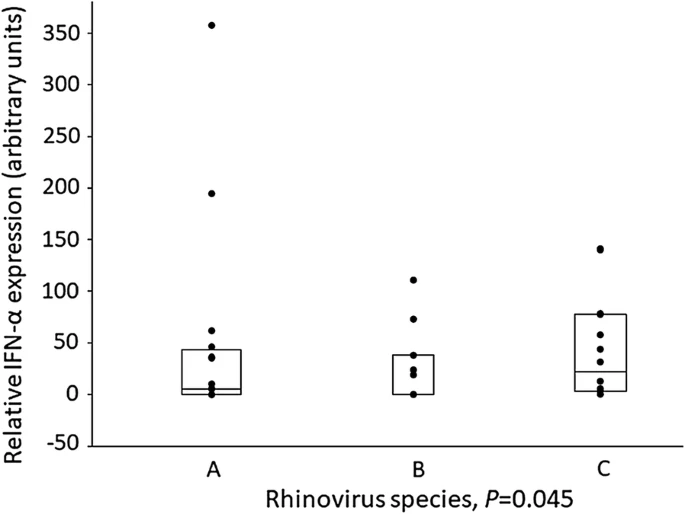- Research
- Open Access
Abstract
Background
Rhinovirus A and C infections are important contributors to asthma induction and exacerbations. No data exist on the interaction of local immune responses in rhinovirus infection. Therefore, we aimed to determine the tonsillar immune responses according to rhinovirus A, B and C infections.
Methods
We collected tonsillar samples, nasopharyngeal aspirates and peripheral blood from 42 rhinovirus positive tonsillectomy patients. Fifteen respiratory viruses or their types were investigated from nasopharynx and tonsil tissue, and rhinovirus species were typed. The expression of 10 cytokines and 4 transcription factors (IFN-α, IFN-β, IFN-γ, IL-10, IL-13, IL-17, IL-28, IL-29, IL-37, TGF-β, FOXP3, GATA3, RORC2 and Tbet) were studied from tonsil tissue by quantitative PCR. A standard questionnaire of respiratory symptoms and health was filled by the patient or his/her guardian. The patients were divided into three groups by the determination of rhinovirus species.
Results
 |
| Relative tonsillar expression of IFN-α. Comparison of tonsil samples between 16 RV-A, 12 RV-B and 14 RV-C positive patients |
Overall, 16 patients had rhinovirus A, 12 rhinovirus B and 14 rhinovirus C infection. In rhinovirus B positive group there were significantly less men (P = 0.0072), less operated in spring (P = 0.0096) and more operated in fall (P = 0.030) than in rhinovirus A or C groups. Rhinovirus A positive patients had more respiratory symptoms (P = 0.0074) and particularly rhinitis (P = 0.036) on the operation day. There were no significant differences between the groups in virus codetection. In adjusted analysis, rhinovirus C infections were associated with increased IFN-α (P = 0.045) and decreased RORC2 expression (P = 0.025).
Conclusions
Rhinovirus species associated differently with clinical characteristics and tonsillar cytokine responses.
No comments:
Post a Comment